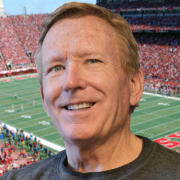Memorial Stadium: The Fifth Decade, 1963-72

Eighth in a series marking the 100th season of Nebraska football in Memorial Stadium. |
|---|
Coach Bob Devaney took Nebraska football from the poorhouse to the penthouse, and fans saw the lion’s share of that remarkable turnaround unfold during the team’s fifth decade in Memorial Stadium.
The growing stadium hosted a steady stream of All-America players and Big Eight champion teams. Ten years earlier, nobody in Lincoln had any business dreaming of a national championship, but Nebraska won two of them, vaulting the Huskers firmly into a place among the nation’s elite.
Born during this time were signature features of Nebraska football: The “Blackshirt” defense, Tom Osborne’s I-formation offense, and Boyd Epley’s pioneering strength and conditioning program.
Of the Huskers’ many standout players, none thrilled the home crowds more than flanker Johnny Rodgers, pictured above. A pass, punt or kickoff sailing in his direction was almost guaranteed to bring fans to their feet in anticipation.
It wasn’t all rainbows and unicorns. A stagnating offense hamstrung the Huskers during back-to-back 6-4 seasons in 1967 and ’68, and there were grumblings that the game had passed Devaney by. After conducting a thorough evaluation of the program, Devaney in 1969 turned the offense and defense over to two of his younger assistant coaches, Osborne and Monte Kiffin. The two functioned as coordinators, though few outside the program knew of the unannounced change.
The rest, as they say, is history. For a sampling of Memorial Stadium games from this 10-season span, scroll past the facts box below.
Just the Facts: 1963-72 |
|---|
• Home record: 49-8-0 (.860). • Overall record: 92-18-2 (.830). • Conference titles: Eight. • National championships: 1970, 1971. • Head coach: Bob Devaney, 1962-72. • All-Americans: Bob Brown, Larry Kramer, Freeman White, Walt Barnes, Tony Jeter, Larry Wachholtz, LaVerne Allers, Wayne Meylan (2), Joe Armstrong, Jerry Muraugh, Bob Newton, Jeff Kinney, Larry Jacobson, Jerry Tagge, Rich Glover (2), Willie Harper (2), Johnny Rodgers (2), Daryl White. • Major trophies: Jacobson, Glover, Rodgers. • College Football Hall of Fame: Brown, Meylan, Glover, Rodgers, Devaney. |
Title drought ends
1963: Nebraska 29, Oklahoma 20. Playing the day after President John F. Kennedy’s assassination, the Huskers were slight underdogs in this game, which would decide the Big Eight championship. The Sooners’ generosity made it far easier than anyone could have imagined. OU turnovers set up four Husker touchdowns, and Nebraska led 29-7 before Oklahoma scored twice in the final two minutes. With the win, the Huskers chalked up their first conference title since 1940. OU coach Bud Wilkinson, facing Nebraska for the final time, finished 14-3 against the Huskers after sweeping his first 12 games in the series. | HuskerMax game page
Hard-fought win vs. Tigers
1964: Nebraska 9, Missouri 0. A packed Memorial Stadium watched the teams grapple to a 0-0 deadlock until Langston Coleman’s sack for a safety broke the scoring ice 2½ minutes into the fourth quarter. Six minutes later, Bob Churchich’s pass to Kent McCloughan on a mad scramble turned into a 37-yard touchdown play, thanks in no small part to a timely downfield block by tackle Larry Kramer. The Halloween victory turned out to be the difference between winning the conference and tying for third place (and probably staying home during bowl season). | HuskerMax game page
Perfect regular season
1965: Nebraska 21, Oklahoma 9. The heavily favored Huskers got off to a fumbling, bumbling start against the 3-5 Sooners and were staring at a 9-0 deficit in the second quarter. To complete its first perfect regular season in 50 years, Nebraska would need its third comeback in four games. After Bob Churchich replaced Fred Duda at quarterback, Charlie Winters got things started by shedding arm tackles on a fourth-down carry and galloping 29 yards to make it a 9-7 game.
Early in the third quarter, halfback Harry Wilson delivered the play of the day. The junior from Ohio followed superb blocking into the Sooner secondary and then did the rest on his own — catching his balance with a hand plant, spinning 270 degrees out of a Sooner defender’s hit and then breaking into the clear for a 66-yard touchdown. For an encore, Wilson hauled in a 38-yard TD pass from Churchich to ice the victory, which gave the Huskers sole ownership of the Big Eight title for the third year in a row. | HuskerMax game page
Punt-blocking machine
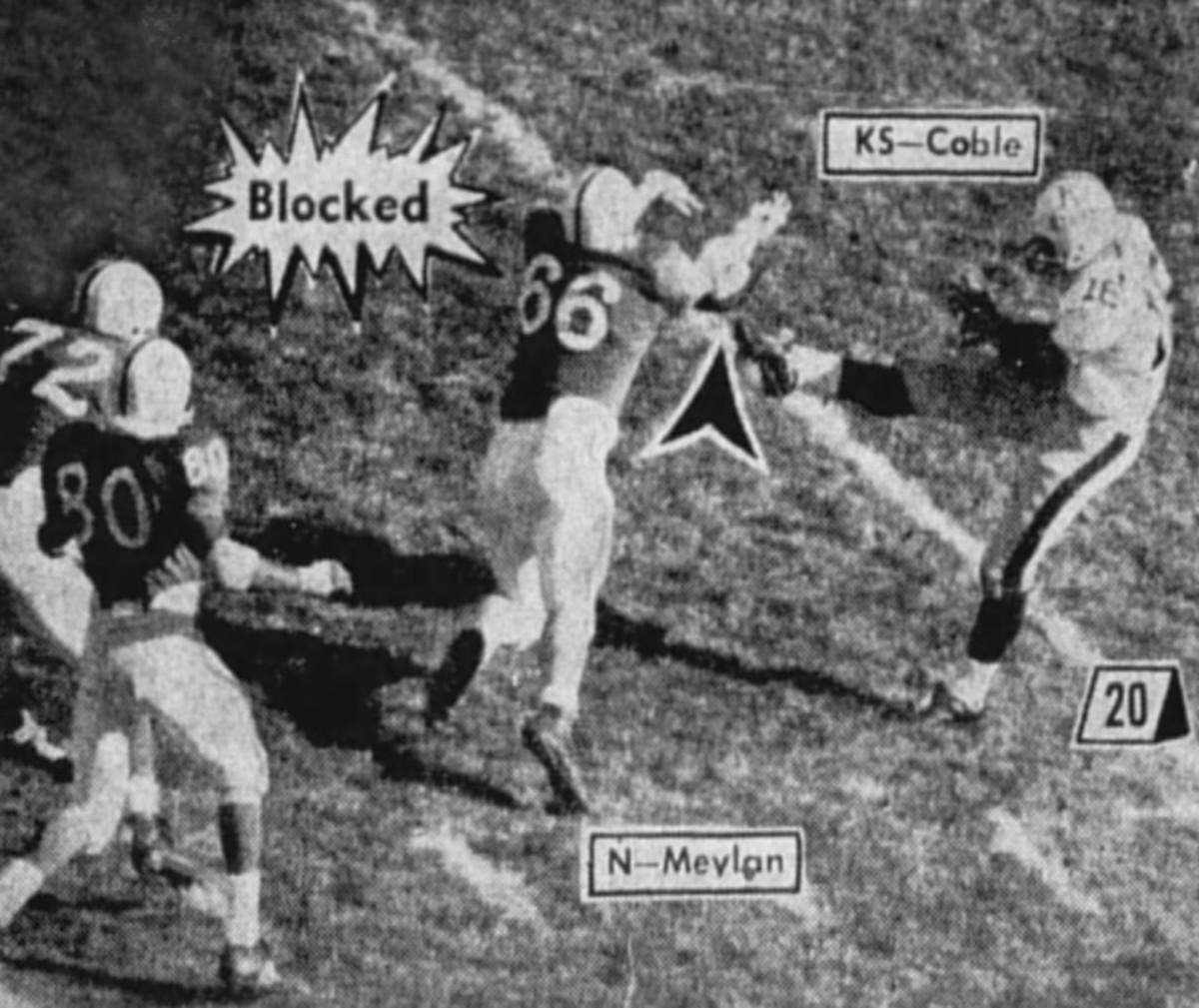
1966: Nebraska 21, Kansas State 10. Ho-hum: Another week, another blocked kick and another touchdown for Wayne Meylan. For the third time in four games, the junior middle guard tore through the center of the enemy line and blocked a punt, and for the second week in a row, he recovered the ball in the end zone for a touchdown.
This was a 14-10 contest until the final minute and a half, and it took a Larry Wachholtz interception followed by a 68-yard touchdown drive to put away the Wildcats. For the fourth time in five games, Nebraska had trouble fending off a lightly regarded opponent, but the Huskers would go on to win their fourth consecutive league title. As for Meylan, the future College Football Hall-of-Famer was named Big Eight Player of the Year by UPI in 1966 and ’67, and both years he was a consensus All-American. | HuskerMax game page
Dominant on defense
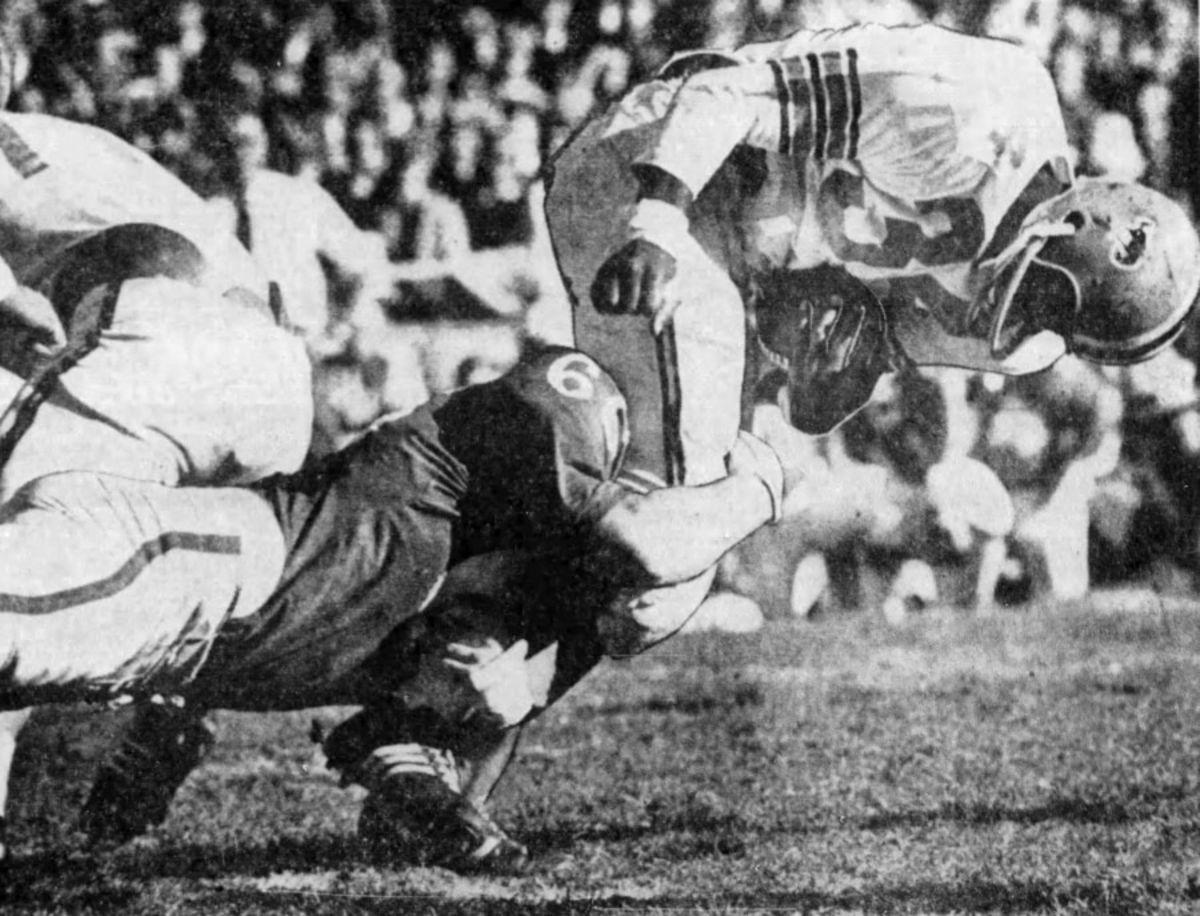
1967: Nebraska 9, Oklahoma State 0. This game typified the Cornhuskers’ 6-4 season: Superb defense and an offense that struggled to score. The Blackshirts pitched their third consecutive shutout and fourth overall by halting the Cowboys several times in Nebraska territory. Though outyarded 3-to-1, OSU was very much in the game until Bill Bomberger kicked a 29-yard field goal in the final five minutes. The Blackshirts — led by a front seven that included Wayne Meylan, Jim McCord, Mike Wynn, Barry Alvarez and Ken Geddes — would finish No. 1 nationally in total defense and passing defense, and No. 4 in rushing defense. The Huskers’ average of 2.51 yards allowed per play remains an NCAA record. | HuskerMax game page
Looking for answers
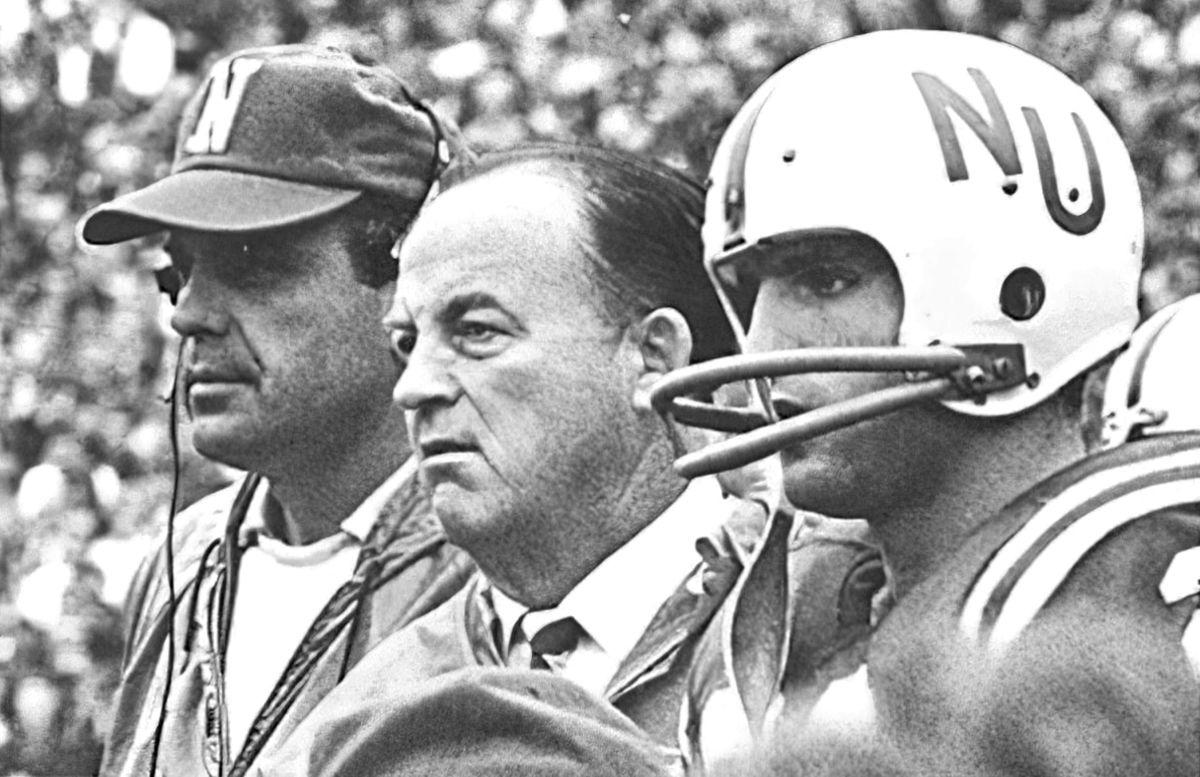
1968: Kansas State 12, Nebraska 0. ABC’s Beano Cook rated it as college football’s biggest upset of the year. Kansas State hadn’t won a conference game since 1964 but dominated the Huskers from the get-go on a wintry November day in Lincoln. Sophomore Lynn Dickey came out throwing and burned Nebraska for 217 aerial yards, including a 47-yard completion that set the tone on the Wildcats’ opening play. The Huskers, meanwhile, managed just 146 yards of total offense. After a 47-0 embarrassment to end the season at Oklahoma and a second consecutive year averaging under 16 points per game, it was time for a retooling of the Nebraska offense. | HuskerMax game page
A little luck never hurts
1969: Nebraska 21, Kansas 17. Bob Devaney’s bounce-back 9-2 season season might have veered off on a different trajectory without this mid-October win, aided by two long-range field goals in the early going and a highly controversial pass-interference penalty late. Devaney had turned over his offense to Tom Osborne during the offseason, and the I-formation was now the Huskers’ bread and butter. Used extensively throughout the afternoon in both the running and passing games was sophomore I-back Jeff Kinney, who plowed three yards for the winning touchdown with 1:22 remaining. The Huskers might have been sunk, however, without Paul Rogers’ first-quarter three-pointers from 55 and 46 yards. | HuskerMax game page
Staying in championship hunt
1970: Nebraska 28, Oklahoma 21: The third-ranked Huskers’ drive to their first national championship stayed alive with this nail-biting win to finish a 10-0-1 regular season. The outcome wasn’t settled until the final play, when Jim Anderson picked off Jack Mildren’s long heave into the end zone. Earlier in the fourth quarter, junior quarterback Jerry Tagge engineered a 53-yard Husker drive to break a 21-21 tie, with the biggest play coming on a 24-yard pass to fullback Dan Schneiss to the OU 3. This was the Blackshirts’ first go-round against the Sooners’ wishbone offense, which would be a staple of the rivalry for two decades. | HuskerMax game page and 1970 Day by Day
Prelude to Game of the Century
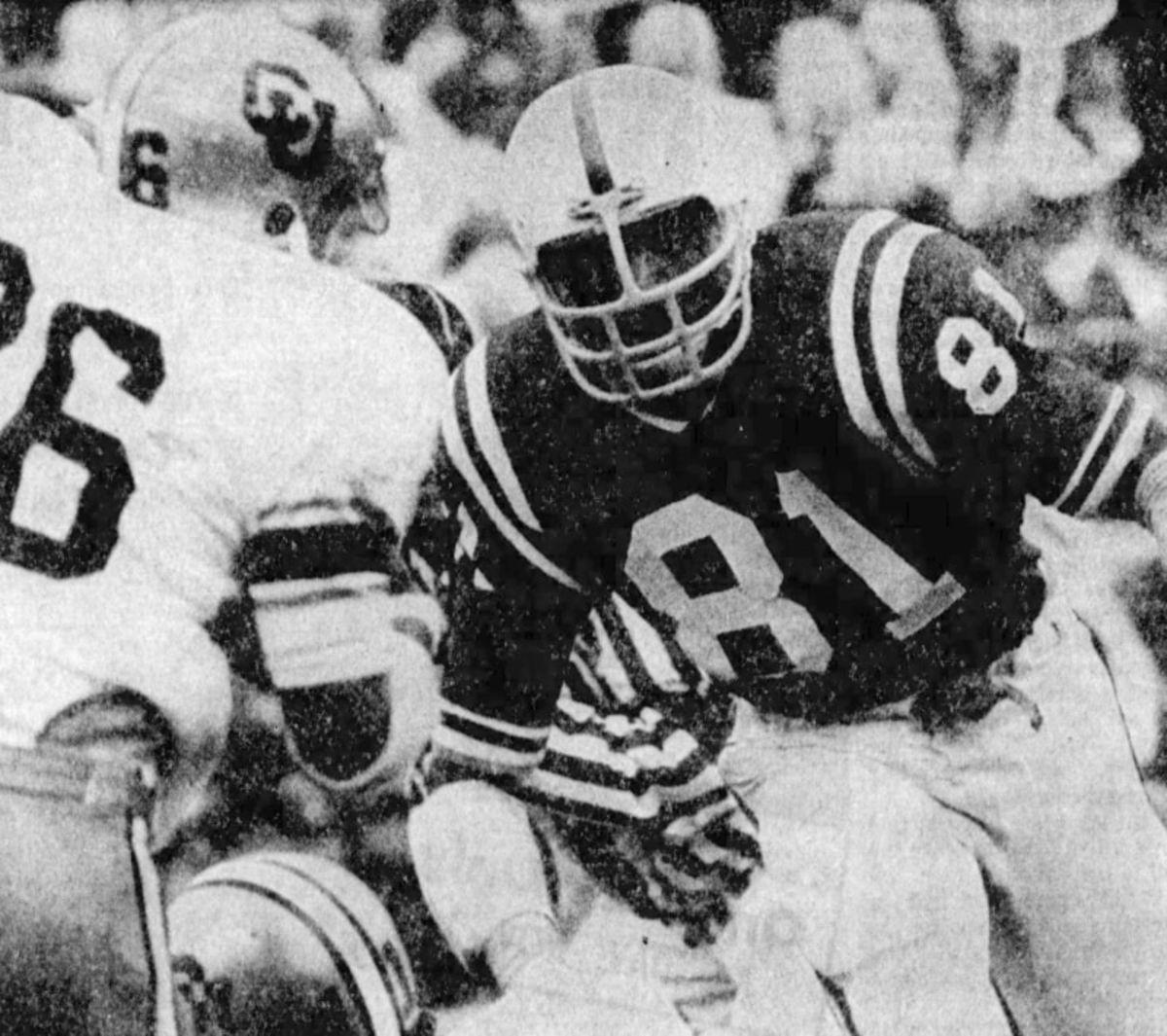
1971: Nebraska 31, Colorado 7: The top-ranked Huskers’ first big test of the season was no contest. This nationally televised battle against the No. 9 Buffaloes (they would finish at No. 3) was essentially over at halftime with Nebraska up by 24-7. The Huskers drove 75, 65, 25 and 16 yards for touchdowns and piled up a 2-to-1 yardage advantage. That was accomplished behind an offensive line with three starters from the junior college ranks: Dick Rupert, Keith Wortman and Carl Johnson.
Now having lost in lopsided fashion to both Nebraska and Oklahoma, Colorado players were asked by reporters to handicap the Husker-Sooner showdown that was 26 days away. Their responses and much more are on the HuskerMax game page.
Stymied in Devaney’s home finale
1972: Oklahoma 17, Nebraska 14: A year after the Huskers’ heady victory in the Game of the Century in Norman, Bob Devaney’s final game at Memorial Stadium signaled the start of Sooner dominance in the NU-OU series — a maddening 1-9 stretch for the Huskers. The Sooners trailed by 14-0 in the second half of this Thanksgiving contest but then reeled off 17 points in 8½ minutes. It was Nebraska’s first home loss since the 1969 opener against USC.
A key to the OU comeback was the play of freshman receiver Tinker Owens, who outshone the Huskers’ Heisman Trophy winner, Johnny Rodgers. The teams combined for 20 punts and 10 turnovers, including a fumble on a sack of Dave Humm that set up the Sooners’ winning field goal. The Huskers and especially Rodgers would rebound nicely in the Orange Bowl on New Year's night to give Devaney a fitting sendoff. | HuskerMax game page
Postscript: Two platoons
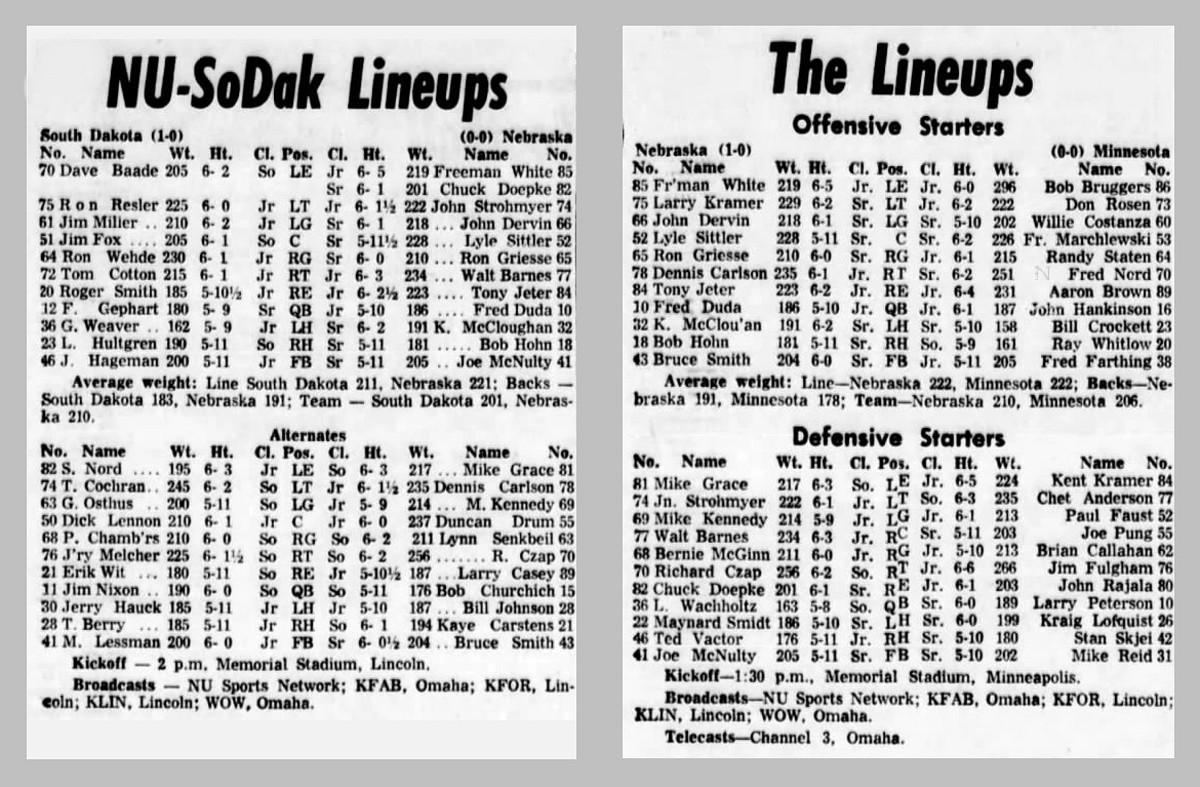
Substitution rules had been loosened incrementally since the abolition of two-platoon football in 1953, but not until 1964 was there a full return of separate offensive and defensive squads.
Though some two-way players remained, specialization became the name of the game. Gone were the days when Hall of Fame offensive guard Bob Brown, for example, would stay on the field and see a good deal of action at linebacker.
After going with one platoon in the 1964 opener against South Dakota, the Huskers made the switch to two platoons in their second game, at Minnesota. The change is reflected in the newspaper game lineups above.
Six years later came a change on the scheduling front. Starting in 1970, the NCAA allowed teams to add an 11th regular-season game. Nebraska took advantage of the revenue-boosting opportunity by adding a home game against Wake Forest to the front end of the schedule. The Sept. 12 contest was the earliest start yet to a Nebraska football season, and it was Huskers’ first game on Memorial Stadium’s new artificial turf.
